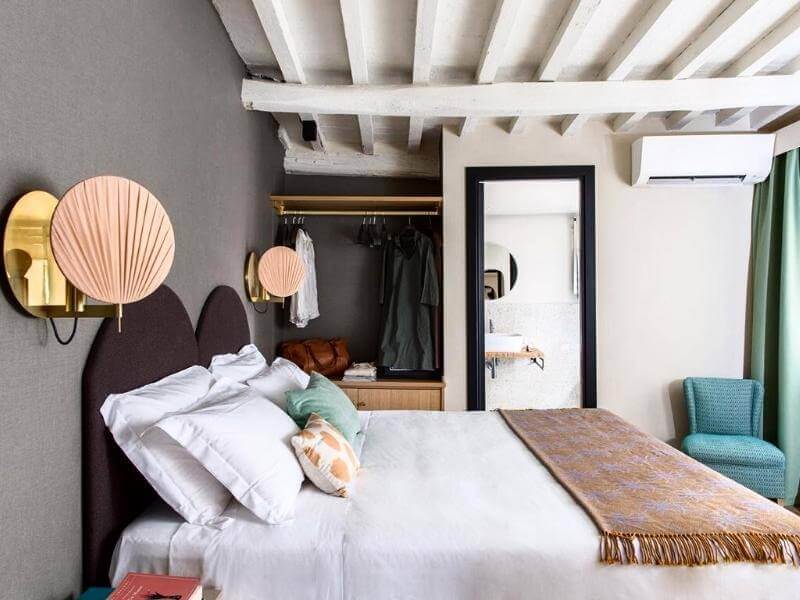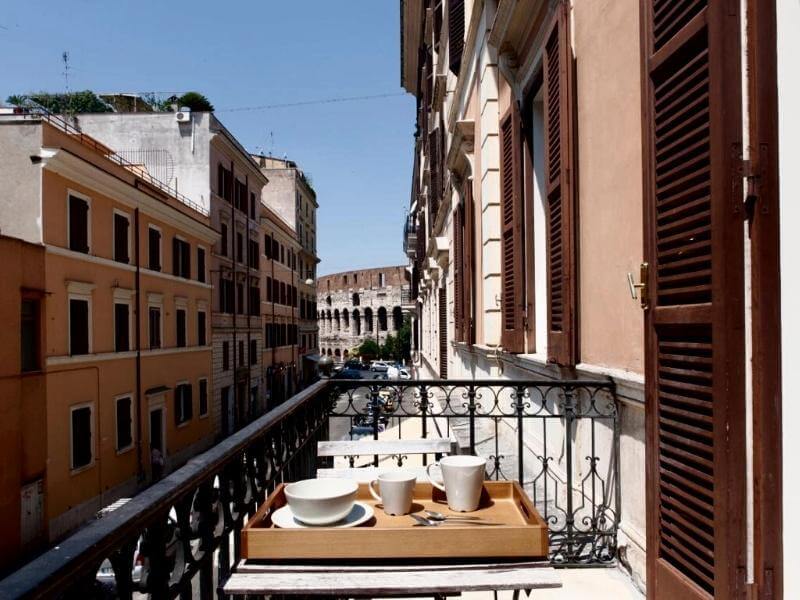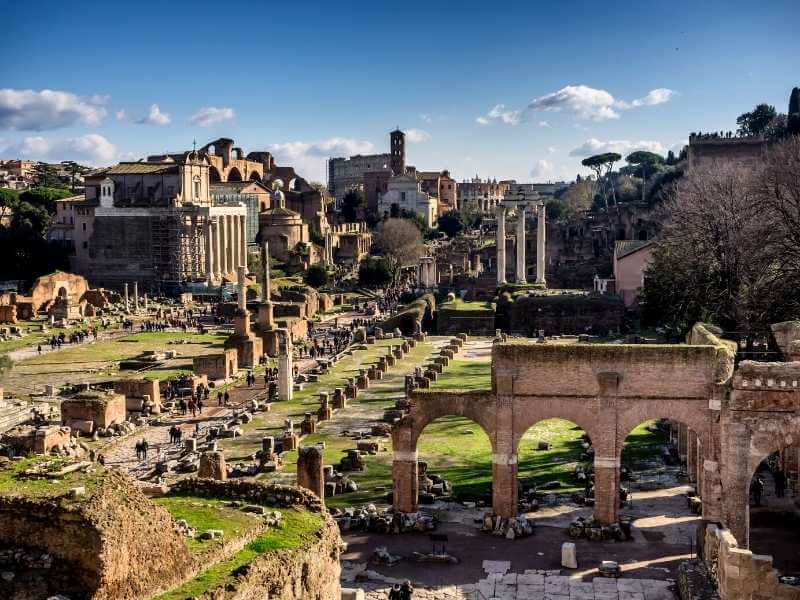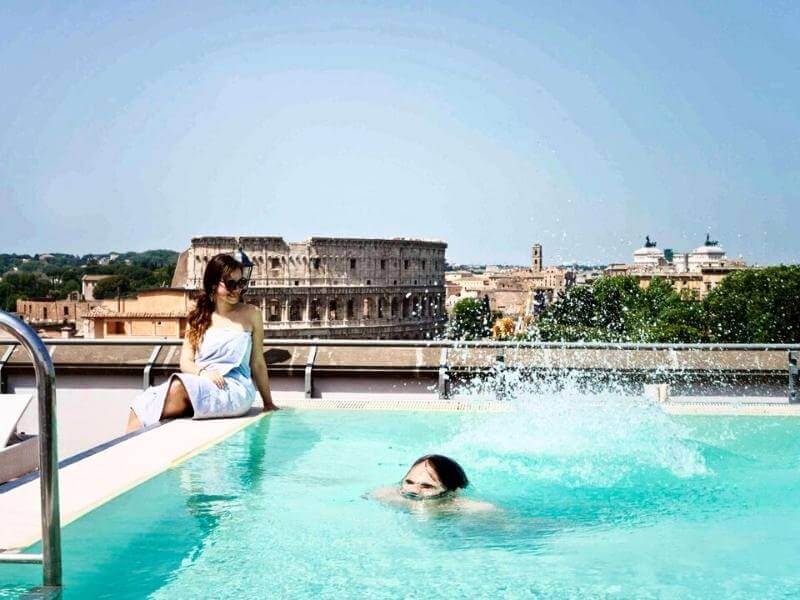
The Colosseum in Rome is the landmark of the City and one of the absolute highlights on your trip! With an annual attendance of more than 6 million tourists, the nearly 2000-year-old amphitheater is one of the top attractions in Rome.
Since July 2007, it is even one of the seven wonders of the modern world! There, it is estimated that about half a million people lost their lives; today, you can get your very own picture of the Roman way of life.
Not only the facade made of tuff stone is highly worth seeing, but a look inside the colossal monument is also truly breathtaking.
Best tours, tickets & activities:
Tickets to Colosseum (Be quick – sold out quickly at the height of the season!)
Adress:
Piazza del Colosseo, 00184 Roma
Transportation:
Metro station: Colosseo, line B
Nearby:
Roman Forum (0,1 km)
Palatine Hill (0,4 km)
Basilica di San Clemente (0,4 km)
Domus Aurea (0,5 km)
Circus Maximus (0,7 km)
Recommended exploration time:
1 – 3 hours (depending on tours / your own pace), queue, security-check entry, …)
Opening hours:
October 31st – February 28th: 09:00 am – 16:30 pm
March 1st – 26th: 09:30 am – 17:30 pm
March 27th – August 31st: 09:30 am – 19:15 pm
September 1st – 30th: 08:30 am – 19:00 pm
October 1st – 30th: 08:30 am – 18:30 pm
closed: January 1st & December 25th
Recommended exploration time:
1 – 3 hours (depending on tours / your own pace), queue, security-check entry, …)
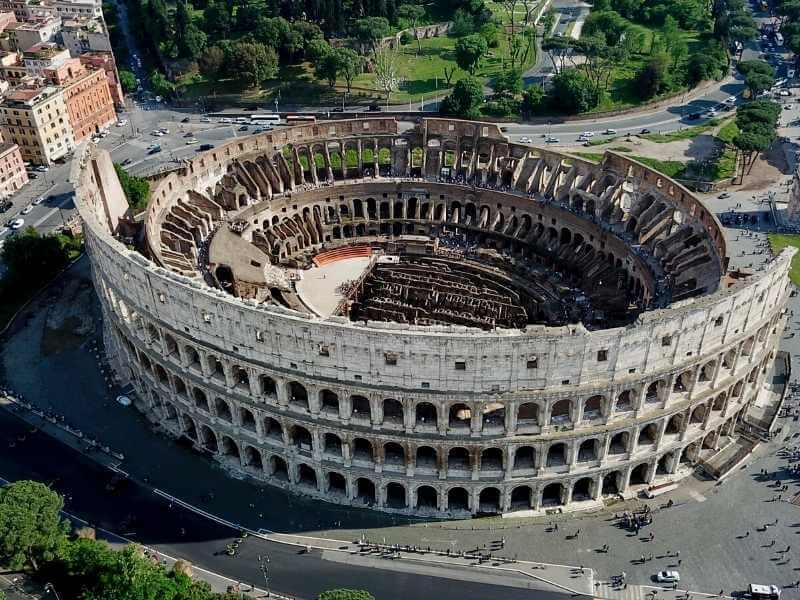
Colosseum Tickets:
Colosseum tickets are always only available in combination with entry to the Roman Forum & Palatine Hill.
The history of the Roman Colosseum from antiquity to the present day
The monument, known in ancient Rome as the “Flavian Amphitheater”, was 188 meters long, 156 meters wide, and 57 meters high. These enormous dimensions made the Colosseum, which could hold about 50,000 people, one of the most significant structures in the world at that time.
The construction of the gigantic monument was initiated by the Flavian emperor Vespasian in 72 AD. He used the money from the looting of Jerusalem to finance the largest amphitheater ever built in the Roman Empire.
Colosseum Tickets + guided Tour:
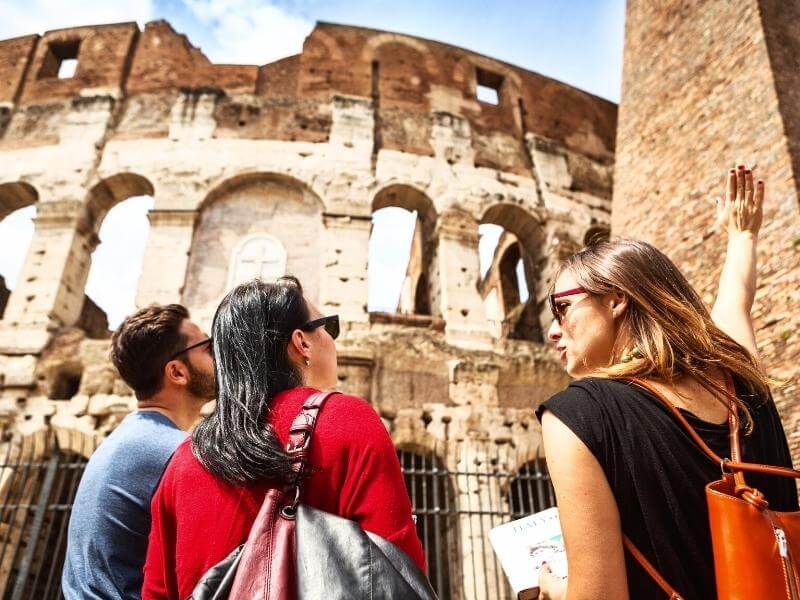
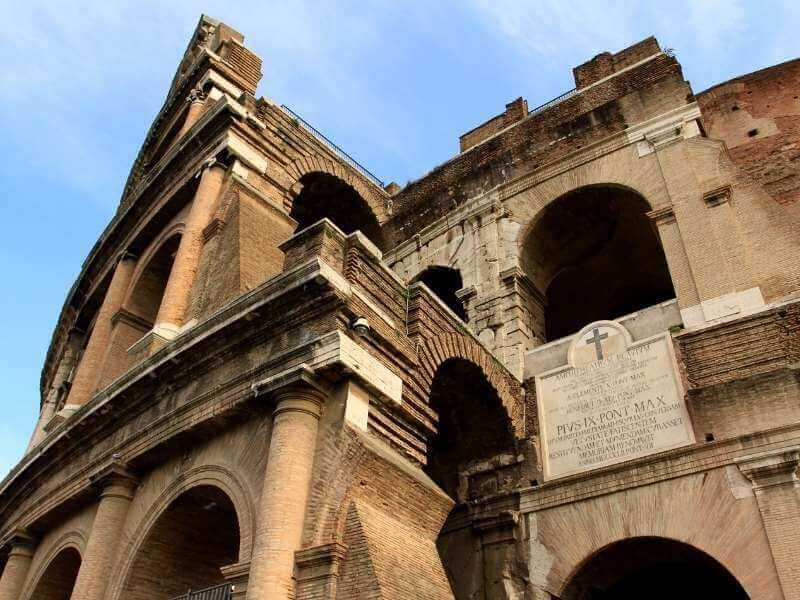
The former amphitheater owes its current name to the “Colossus,” a 35-meter-high bronze statue of Emperor Nero. This giant statue once decorated the entrance to the Domus Aurea, the emperor’s pompous palace.
The imperial palace, with its big artificial lake, was located precisely where the Colosseum was later built.
Emperor Vespasian had the lake drained and decided to create a public amphitheater of gigantic proportions, which could hold tens of thousands of Romans.
As an extravagant venue for bloody gladiator fights, the Colosseum was intended to increase the emperor’s popularity with the Romans and appease the people.
The satisfaction of the citizens, of course, had immense importance for political activities.
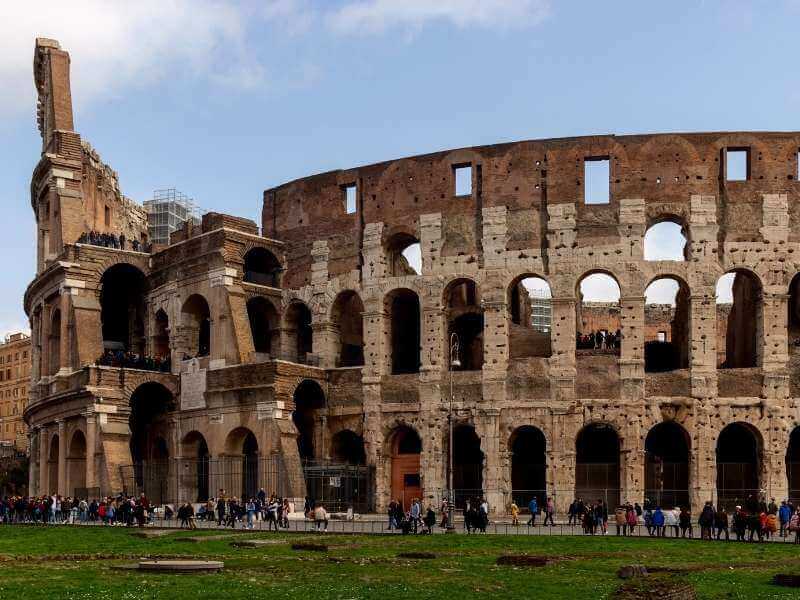
The construction of the Roman Colosseum began in 72 A.D. Only eight years later, the arena was finally completed under the reign of the new emperor Titus and solemnly inaugurated with a hundred days of games.
It is estimated that the three-month-long festivities alone cost the lives of more than 2,000 gladiators. Emperor Domitian had the stadium extended to the top floor two years later.
In addition to the most brutal gladiator fights, gladiators fought with wild animals here. These included mainly tigers, lions, and elephants from Africa.
Executions were regularly carried out, and reenactments of famous naval battles were celebrated. The Colosseum was thus the meeting place of the Roman people and full of spectacle and drama.
Our hotel recommendations at the Colosseum:
Have you already found a suitable hotel?
We have researched the best hotels nearby! -> Hotels close to Colosseum Rome
With the end of the persecution of Christians and the arrival of Christianity, Christianity finally declared the Roman Empire’s state religion in 391. Just under four hundred years later, the circumstances were to change.
After the public execution of a monk, only arena fights with wild animals were allowed until the year 523 AD. The barbaric games would eventually end in 404 under Emperor Honorius.
In the years that followed, the Colosseum lost some of its esteem. The increasing decay of the once so-popular amphitheater of Rome remained. In addition to the considerable decline in the population, earthquakes, in particular, took their toll on the gigantic structure.
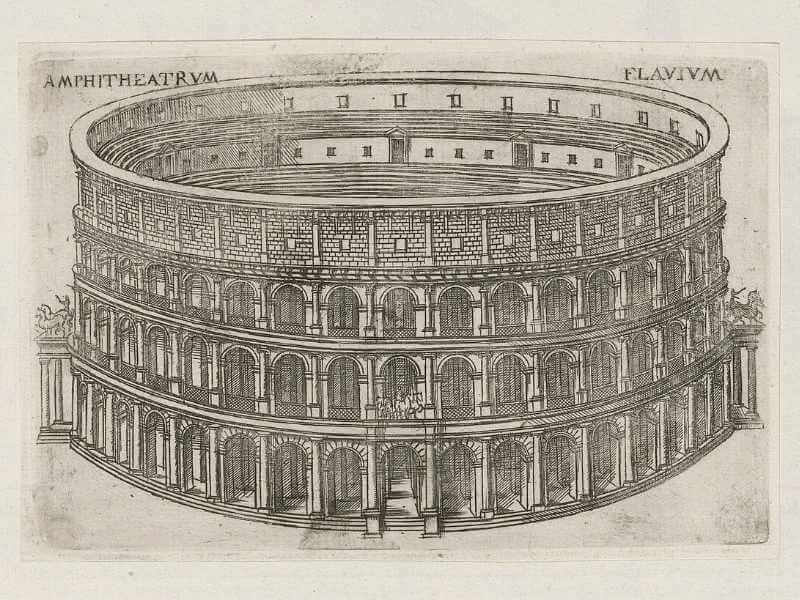
In the early Middle Ages, the Colosseum was first used by two noble families. Sometime later, the structure was then even used as a church and fortress until it finally fell into disrepair as a quarry for construction work in the city.
Vandalism and looting contributed to the deterioration of the building. First of all, popes and aristocrats began to use the stones to give the city a new face with new churches and palaces. Palazzo Venezia is one of them!
Thus, the countless marble seats had to give way to many decorative objects. Only under the leadership of Pius VIII in the 19th century did the resurrection of the ancient monument begin.
In the 1990s, efforts to preserve this great architecture were increased many times so necessary restorations could be carried out.
The following highlights await you at the Colosseum
The overall construction of the Colosseum is extremely impressive, both visually and architecturally. Unlike the amphitheaters already established then, the Colosseum was built as a free-standing building construct.
The complex system of cross vaults, underground tunnels, staircases, and the like was mainly made of stone and concrete. The main structure, including the grand facade, is travertine, while the side walls and arcades are made of volcanic tuff and concrete.
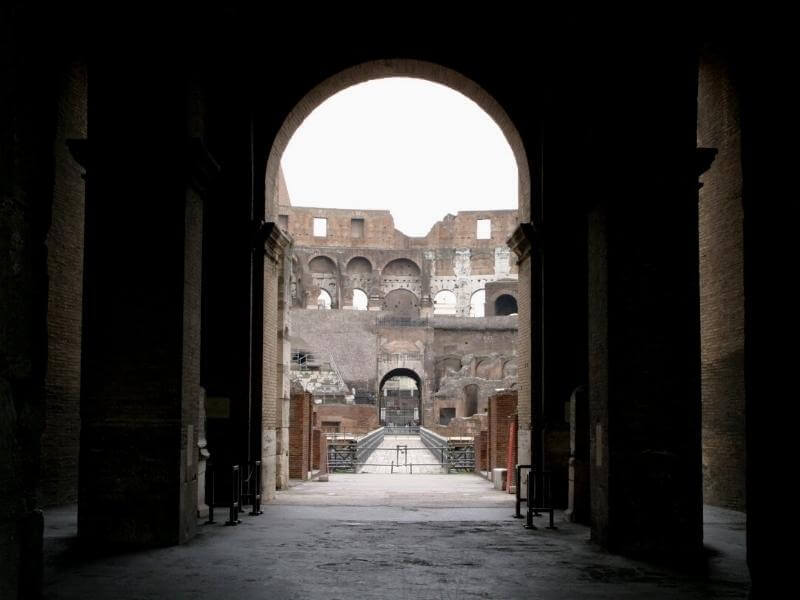
Three levels are surrounded by arcades framed by columns in Corinthian, Doric, and Ionic styles. Unfortunately, the top level is no longer preserved today.
The most beautiful view of the monument is from Via Dei Fori Imperiali, as this side of the Colosseum is still the best preserved.
At the time of gladiator fights, 50,000 people found their way to their seats within a very short time. But how was that even possible at that time? The amphitheater had an incredibly sophisticated admission system.

The Colosseum had 80 entrances, corridors, and the like, which were placed around the monument. Even today, the Colosseum is considered a pioneer and exemplary example of modern stadium construction!
Unlike today, the Colosseum used to have a giant solar sail, the “Velarium”. The sail was attached via 240 vertical masts, all connected to the top tier of spectators.
Thus, the visitors to the games could sit in the shade, which was indeed a relief in midsummer temperatures.
The velarium was flexible so that it could be opened and closed. Unlike today, however, this process was not quite so simple. It took almost 1,000 Romans to assemble the enormous sunshade!
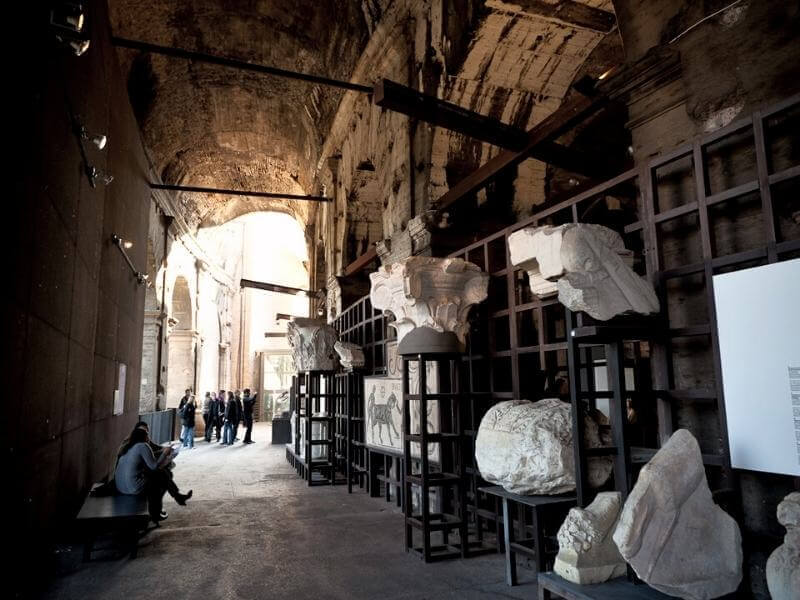
Today, if you look down on the unique structure from one of the tiers, you will discover not a solid floor but much more the ruins of the ancient tunnel system, the underground chamber.
This branched system consisted of underground passages, cages, and trapdoors, which served as surprise entertainment.
So the spectators could not know whether a wild predatory cat would not suddenly jump out of one of the floor openings and join in on one of the brawls.
The Romans controlled the heavy cages with the help of pulleys, which had to be operated by many men. A tunnel led directly to the largest gladiator school in Rome. Just above the underground chamber was a floor made of wood, which in turn was covered with sand.
Romans removed the wooden floor accordingly if the Colosseum was flooded for a simulated naval battle. There were quite a few additional rooms with more storage facilities and dungeons.
As for the seating order, the Colosseum had a clear hierarchy. Depending on their status, citizens had extraordinary privileges. There were five different ranks, which relied entirely on the social status of the visitor. The closer you were to the action, the more influential you were.
The emperor and his senate naturally followed the bloodthirsty battles at close range. In individual cases, it was his thumb that decided death or life. The middle tribune rank was claimed by the well-heeled citizens of the city, while the common people sat at the top and saw correspondingly less.
More helpful information for your visit to the Colosseum
To visit the Colosseum, you must first go through a security check similar to the one at the airport. The staff will scan your backpacks and handbags and make you go through a metal detector.
Giant backpacks are prohibited, as are suitcases and the like. Knives and other potentially dangerous objects are also strictly prohibited.
Smaller to medium-sized backpacks can be taken along without any problems. Filled water bottles are prohibited, as are glass bottles in general.
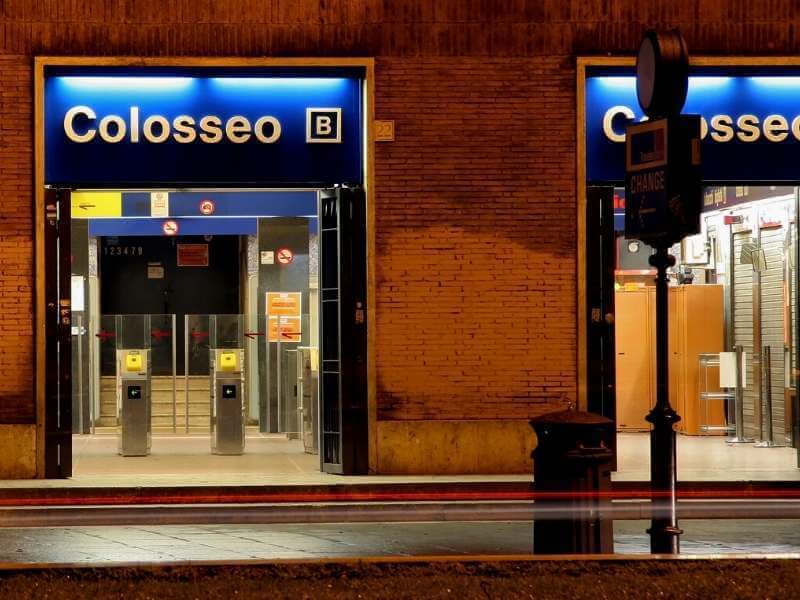
The Colosseum is also suitable for wheelchair users. There is an elevator with which you can easily reach the upper floors. Moreover, the entrance to the building is built at ground level.
Those who wish to use the elevator will receive assistance from a staff member at the ticket counter. Admission for persons with a disability is also free of charge as long as they are from an EU member country.
Where is the Colosseum located?

Editor: Sebastian Erkens
Hey and welcome to Rome-Tourist! My name is Sebastian and I travel regularly to Rome, Italy.
On our Rome blog you will get valuable travel tips. If you have any questions about specific tours or sights, feel free to leave us a comment.
These articles may also interest you:

